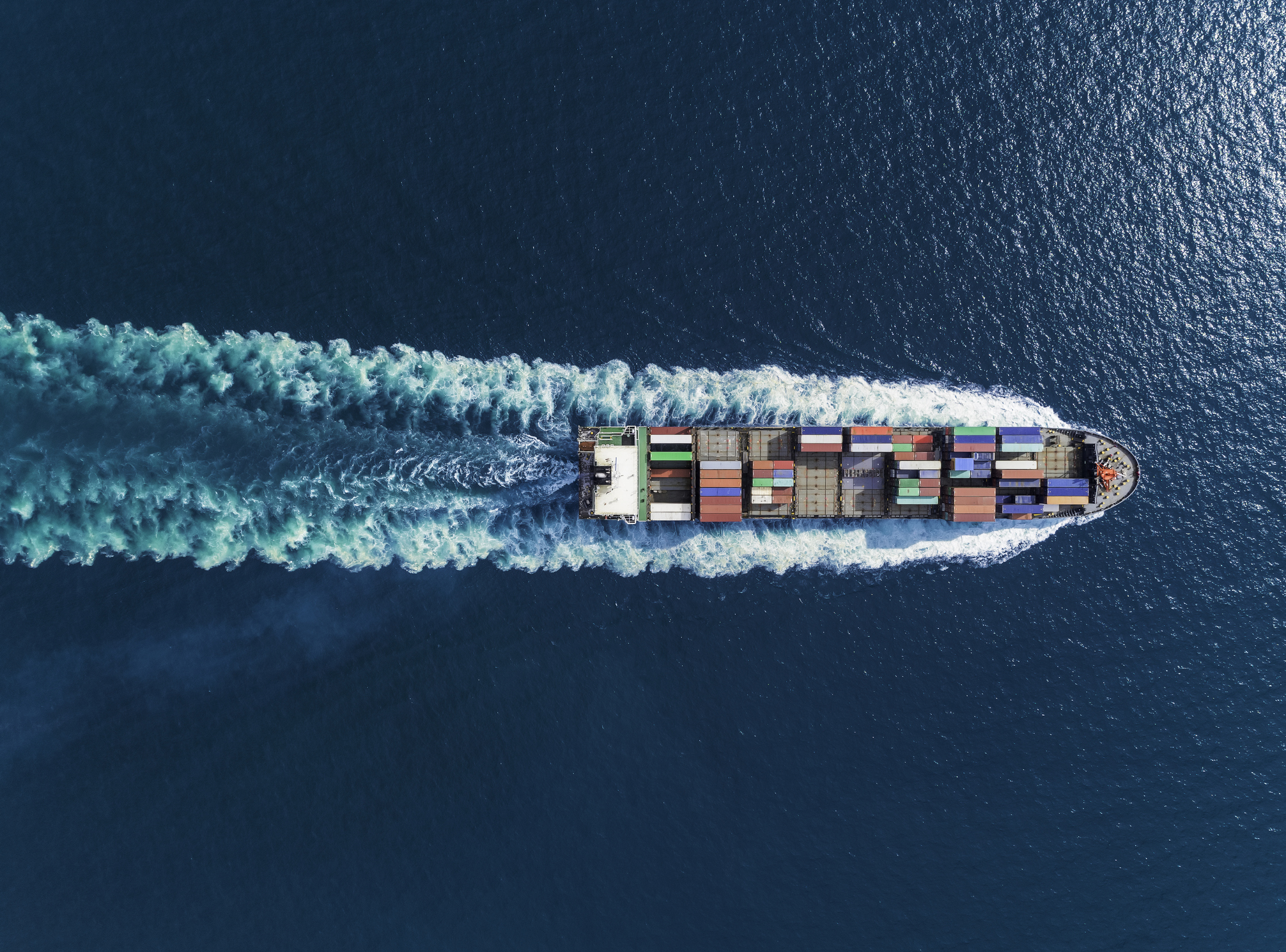What’s the outlook for the shipping industry in 2025?
All we know for certain about the year ahead is that it will be volatile. But the container shipping sector thrives on choppy waters


Over the past month, a steady stream of reports on the investment outlook for 2025 has arrived in my inbox. Compiled by the top analysts at the likes of JPMorgan, Morgan Stanley, UBS, Deutsche Bank, Goldman Sachs, Barclays, SocGen and BNP Paribas, the reports, which can run up to 100 pages, try to distil the investment prospects for the year ahead for the respective firm’s clients. This year, there’s one big theme that runs through each and everyone: uncertainty.
Uncertainty will be the name of the game for investors in 2025, and uncertainty means volatility. Since the US election in November, analysts worldwide have been trying to predict what Donald Trump’s second term in the White House could mean for the global economy and financial markets. Some have focused on his actions the first time around to try and second-guess the future, but it seems unlikely Trump’s next term in the White House will be anything like the first. He now has an entirely different team around him, and over the past five years, he’s learned a lot.
As well as the Trump wild card, investors have to navigate what’s already an uncertain environment. Over the past five years, the global economy has been battered by a pandemic, wars and inflation. Countries are still feeling the fallout. Germany’s economy is flirting with recession and China is grappling with deflation. Meanwhile, France’s political situation has spooked even the most experienced French investors, leaving both of Europe’s leading economic powerhouses struggling (and let’s not get into the UK’s situation).
MoneyWeek
Subscribe to MoneyWeek today and get your first six magazine issues absolutely FREE

Sign up to Money Morning
Don't miss the latest investment and personal finances news, market analysis, plus money-saving tips with our free twice-daily newsletter
Don't miss the latest investment and personal finances news, market analysis, plus money-saving tips with our free twice-daily newsletter
What’s the outlook for the shipping industry?
But if that all sounds like it will be a bad year for assets, it’s worth looking back at what analysts were saying this time last year. Take JPMorgan’s “2024 Year Ahead Outlook”, compiled by one of the best-resourced investment banks in the world. In the opening statement of the report, JPMorgan’s Marko Kolanovic and Hussein Malik say: “As we approach 2024, we expect both inflation data and economic demand to soften, as the tailwinds for growth and risk markets are fading. Overall, we are cautious about the performance of risky assets and the broader macro outlook over the next 12 months due to building monetary headwinds, geopolitical risks, and expensive asset valuations”.
The team pencilled in a year-end 2024 price target of 4,200 for the S&P 500, a decline of 8% for the year, 7,700 for the FTSE 100, $2,175 for gold and a yield of 3.75% for the US ten-year Treasury. Instead, today the S&P 500 is on track for one of its best years ever, up nearly 27% at 6,075, the FTSE 100 is trading at 8,200, gold has hit an all-time high and is currently trading around $2,650 and the US ten-year Treasury is at 4.4%.
Ultimately, forecasts are just that, forecasts. Analysts can’t tell the future any more than you and I can. All they can do is make an educated guess about future trends based on what we know right now. And right now, we know the future looks very, very uncertain. Investors usually try to avoid uncertainty at all costs, but it can be good for certain sectors. The global shipping industry is a prime example. Over the past five years, as the world has bounced from one crisis to another, the companies responsible for transporting goods worldwide have reaped windfalls from uncertainty and volatility.
Shipping is one of the largest industries in the world and some 11 billion tons of goods are transported by ship each year – around 1.5 tons per person. The total value of this trade is estimated at around $14trillion, growing at a rate of 7% per annum. However, the sector is also hyper-competitive. The World Shipping Council has recorded more than 100 liner-ship operators moving 250 million containers each year on more than 7,000 ships. A liner shipping service operates on a timed schedule, visiting a fixed loop of ports. These numbers refer mainly to the container shipping industry, the companies and ships that move finished products around the world. The other side of the industry – the firms that move unfinished commodities – is equally important, but these dry bulk and tanker segments have their own quirks and qualities with prospects influenced by different factors that are worth saving for a different article.
How the shipping industry works
The liner-shipping industry is dominated by a handful of major players. However, due to the commoditised nature of container shipping, size is no guarantee of success for the biggest companies. Figures compiled by the World Shipping Council show the Mediterranean Shipping Company (MSC) as the industry’s largest player, at just under 20% of the market. A.P. Moller-Maersk Group comes in second, with a market share of around 15%, followed by French shipping giant CMA CGM and state-owned Chinese behemoth Cosco Shipping and German-based Hapag-Lloyd. The top five carriers account for about 60% of world fleet capacity, and the top ten account for just over 80%. Around a fifth of the industry’s worldwide capacity is distributed among more than 300 carriers. The numbers are constantly shifting as carriers are founded, collapse and merge.
Size is everything in this industry, where companies lack overall pricing power. Prices in the sector are set using local and international benchmarks, such as the Drewry World Container index (WCI), a global freight-rate index that aggregates the cost of moving a forty-foot equivalent unit (FEU) (a 40ft container to you and me) across some of the world’s most important trade routes, such as the one between Shanghai and Rotterdam. The rates on these routes fluctuate based on supply and demand. For example, according to Drewry, in the week to 19 December freight rates from Shanghai to Los Angeles rose 26%, or $917, to $4,499 per FEU and those from Shanghai to New York increased 17%, or $875, to $6,074 per FEU.
Rates have risen as demand for capacity has increased due to “front-loading” ahead of a looming port strike in January 2025 and the “anticipated tariff hikes under the incoming Trump administration”, Drewry says. In October last year, a strike by workers at major east and Gulf coast ports was postponed for 90 days as the two sides worked towards an agreement on automation and wages. Talks have stalled, and if the strikes go ahead it could mean major disruption at these key ports. Companies are paying over the odds to get their goods across the sea before the strikes kick off again.
Instability and disruption have dominated the headlines in the shipping world over the past five years. The Shanghai Containerised Freight index exploded from a ten-year average of around $1,000 per twenty-foot equivalent unit (TEU) to more than $4,500 between the second quarter of 2020 and the first quarter of 2022 as the pandemic disrupted global trade routes. The index fell back to its ten-year average in 2023, but has since spiked to above $3,000. Disruptions in key routes through the Red Sea, Suez Canal and Panama Canal have significantly increased freight rate volatility. On top of these challenges, rising insurance, fuel and environmental costs and heightened fuel consumption have all combined to push rates higher and keep them elevated.
Estimates from the UN Trade and Development (UNCTAD) agency show that disruptions due to climate-induced low water levels in the Panama Canal contributed 49 percentage points to the overall 45% rise in the Baltic Dry index (one of the best-known and oldest index benchmarks) between October 2023 and January 2024. The impact of this disruption had almost worked its way through the industry by the middle of the year, but by this point disruption in the Red Sea had taken over as the primary driver of higher freight rates. The Red Sea crisis and Suez Canal disruptions contributed 148 percentage points to the cumulative 120% increase in the China Containerised Freight index from October 2023 to June 2024, according to UNCTAD. Luckily for consumers (the higher cost of shipping is eventually passed onto consumers via higher prices), the increase in freight rates was tempered by a record year for new-builds entering the market. Container-ship deliveries hit a record of 2.5 million TEU in the first ten months of 2024. UNCTAD estimates this helped moderate freight prices by around 30 percentage points.
Is shipping a risky industry?
A.P. Moller-Maersk’s third-quarter numbers give us some idea as to how sensitive these companies are to positive (and negative) changes in the rates commanded on primary shipping routes. The company has said a $100 shift either way in the price charged per FEU will have a $300 million impact on earnings before interest and tax (EBIT). In the third quarter of 2024, the group reported an average loaded freight rate of $3,236 per FEU compared with just $2,095 in the prior year. Although fuel costs rose marginally over the same period, the higher average freight rate was enough to flip the company from an EBIT loss of $27 million to a profit of $2.8 billion.
Those numbers illustrate what can go wrong in this highly competitive, commoditised and operationally geared industry. The group’s fixed costs for the period were $2,376 per FEU. That’s fine with rates above $3,000, but when rates plunge, as they did in the second half of 2023, profits can quickly evaporate. For the reasons outlined above, rates will probably remain elevated for the foreseeable future. Trade disruptions and climate change are only going to continue to disrupt globally established trade routes and, despite additional capacity coming into the market, longer voyages are tying up vessels. Economic uncertainty also means there’s less long-term clarity for ships’ owners and clients, suggesting a short-term risk premium will remain in rates.
One telling sign of the tightness in the market is the price of second-hand vessels. At the start of the year, prices for vessels with an age of five years or more were sitting at around 70% of the value of new builds. However, according to data compiled by shipbroker Clarksons, prices began to climb in the second half of the year and have now risen to around 80% of new-build prices. The cost of new vessels has risen as well. Prices for new builds have risen by around 20% since the start of 2023, surprising brokers who had predicted a stabilisation of demand in the face of higher prices.
At some point, the market will turn. Shipping is a cyclical industry and the market cannot continue to add new capacity at an unrelenting clip year after year if demand does not rise at the same rate. Analysis by Bimco, the world’s largest direct-membership organisation for ship owners, charterers, ship brokers and agents, noted that 2024 was a record year for growth in both supply and demand, but 2025 will see supply and demand better matched. Bimco has forecast growth in demand for cargo of 3%-4% in 2025 and 3.5%-4.5% in 2026, with import volumes into south and west Asia, and south and central America, to grow the fastest. The fleet is expected to grow 5.8% in 2025 and 2.8% in 2026. Separately, if ships return to Suez in significant numbers, it will put downward pressure on rates.
This risk has kept buyers at bay over the past year. Shares in the largest companies, Cosco (Hong Kong: 1919), Hapag-Lloyd (Frankfurt: HLAG), A.P. Moeller-Maersk (Copenhagen: MAERSK), Evergreen Marine (Taipei: 2603) and Nippon Yusen (Tokyo: 9101), have lagged the wider market, despite surging profits. Cosco and Evergreen are the exceptions, with returns of 60% and 40% respectively. Maersk has chalked up the worst performance: its shares have lost 9% over the past 12 months. Deutsche Bank has a “sell” rating on the stock, concerned that there is “no evidence of a turn in the cycle and that significant overcapacity will lead to pressure on freight rates”, the main driver of the share price. Undoubtedly this is a cyclical play, but there’s already lots of uncertainty baked into the valuation. Maersk is trading at less than book value and a mid-single-digit price/earnings (p/e) ratio. On a book-value basis, it’s half the price of European peer Hapag-Lloyd.
Alternative plays on the sector
An alternative way to play the above trends is via the ship brokers, such as Clarksons (LSE: CKN) and Braemar (LSE: BMS). Both firms specialise in broking vessels, matching demand with supply across various local markets and commodity classes. In uncertain and volatile markets, their experience is even more valuable. Unlike the container-shipping groups outlined above, they operate across the shipping industry and, as a result, are well-positioned to profit from a general cyclical upswing across the sector, a view held by analysts at Berenberg and Canaccord Genuity.
In a recent note on Braemar, the latter stated that it believes “a super-cycle will potentially lift long-term shipping rates”, which will work in the company’s favour as it books recurring revenue on all contracts negotiated. The super-cycle could offer “scope to expand the forward order book and increase the proportion and duration of annual recurring revenue (as ship charters extend in duration, which helps because Braemar gets paid every year of a multi-year charter)”. Meanwhile, Berenberg notes Clarksons would benefit from rising commodity freight rates, “reflecting demand/supply imbalances which look set to remain, alongside an active vessel sale and purchase market”.
Of the two, Braemar is the cheapest. It is trading on a forward p/e of seven compared with Clarksons’ 14 (or 12 after adjusting for cash, currently 16% of its market capitalisation). It also offers a dividend yield of 5.9%, and the payout is well-covered by earnings per share and free cash flow. Clarksons’ dividend yield, at 2.9%, doesn’t match Braemar’s, but as Berenberg notes, the company “operates a highly cash-generative model” that should allow it to deploy resources to drive future growth in earnings and dividends.
A brief history of the shipping container
The shipping container has been called one of the greatest inventions of the 20th century as it revolutionised global trade and cut the cost of trading, accelerating the pace of globalisation. The shipping container we are all used to seeing today was invented in 1956 by American entrepreneur Malcolm McLean. He saw that standardising the process of loading and unloading ships would make it easier to bring in mechanisation, speeding things up and cutting costs.
He originally built a container with a length of 33 feet and a height and width of eight feet. The impact was immediately apparent. It has been calculated that in 1956 manually loading a ship cost $5.68 per ton ($65.88 in today’s money). After the changes, the cost fell to around 19 cents. Today, the standard container size is 20 feet long, eight feet wide and nine feet tall, known as a twenty-foot-equivalent container unit, or TEU. There’s also the forty-foot-equivalent container unit, or FEU, which is longer, but the same width. Standardisation has also lowered the cost of constructing vessels to transport containers, sparking a size arms race.
The average size of a container ship has doubled in the past 20 years alone, with the largest ships now capable of holding 24,000 containers. There’s speculation that the figure could rise by 50% by the end of the decade. Yet ships are now getting so big that efficiency gains achieved by further scale are likely to be offset by increased delays in port and additional time spent at sea to navigate logistical challenges such as the Suez Canal. Ever Given, one of the largest container ships in the world with a capacity of 20,000 containers, ended up getting stuck in the Suez Canal in March 2021 when a rogue gust of wind caught the ship off guard. As designers struggle to drive further scale through size, the industry is increasingly looking to automation to lower costs further.
The world’s first fully automated container port was the Delta/Sea-Land Terminal in Rotterdam, which opened in 1993. Since then, a steady stream of increasingly sophisticated, fully automated ports have been opened, including Busan New Port in South Korea last year, the first fully automated container terminal in South Korea. South Korea also achieved another automation milestone last year – the launch of the first container ship designed with an integrated automation system. Its systems have been designed to aid navigation and reduce fuel consumption using data such as weather patterns, which could ultimately reduce the cost of shipping.
This article was first published in MoneyWeek's magazine. Enjoy exclusive early access to news, opinion and analysis from our team of financial experts with a MoneyWeek subscription.
Get the latest financial news, insights and expert analysis from our award-winning MoneyWeek team, to help you understand what really matters when it comes to your finances.

Rupert is the former deputy digital editor of MoneyWeek. He's an active investor and has always been fascinated by the world of business and investing. His style has been heavily influenced by US investors Warren Buffett and Philip Carret. He is always looking for high-quality growth opportunities trading at a reasonable price, preferring cash generative businesses with strong balance sheets over blue-sky growth stocks.
Rupert has written for many UK and international publications including the Motley Fool, Gurufocus and ValueWalk, aimed at a range of readers; from the first timers to experienced high-net-worth individuals. Rupert has also founded and managed several businesses, including the New York-based hedge fund newsletter, Hidden Value Stocks. He has written over 20 ebooks and appeared as an expert commentator on the BBC World Service.
-
 How gifting money this Christmas could lower your inheritance tax bill
How gifting money this Christmas could lower your inheritance tax billCash is an easy and quick present to give over Christmas – and it could protect some of your estate from the taxman down the line
-
 £100 contactless card limit to be lifted
£100 contactless card limit to be liftedConsumers will be able to set their own contactless limits from March 2026, under new rules from the Financial Conduct Authority
-
 Luana Lopes Lara: The ballerina who made a billion from prediction markets
Luana Lopes Lara: The ballerina who made a billion from prediction marketsLuana Lopes Lara trained at the Bolshoi, but hung up her ballet shoes when she had the idea of setting up a business in the prediction markets. That paid off
-
 British blue chips offer investors reliable income and growth
British blue chips offer investors reliable income and growthOpinion Ben Russon, portfolio manager and co-head UK equities, ClearBridge Investments, highlights three British blue chips where he'd put his money
-
 Coreweave is on borrowed time
Coreweave is on borrowed timeAI infrastructure firm Coreweave is heading for trouble and is absurdly pricey, says Matthew Partridge
-
 Renewable energy funds are stuck between a ROC and a hard place
Renewable energy funds are stuck between a ROC and a hard placeRenewable energy funds were hit hard by the government’s subsidy changes, but they have only themselves to blame for their failure to build trust with investors
-
 Profit from document shredding with Restore
Profit from document shredding with RestoreRestore operates in a niche, but essential market. The business has exciting potential over the coming years, says Rupert Hargreaves
-
 The war dividend – how to invest in defence stocks as the world arms up
The war dividend – how to invest in defence stocks as the world arms upWestern governments are back on a war footing. Investors should be prepared, too, says Jamie Ward
-
 Literacy Capital: A trust where great returns fund a good cause
Literacy Capital: A trust where great returns fund a good causeThere’s plenty to like about specialist private-equity trust Literacy Capital, says Max King
-
 An AI bust could hit private credit – could it cause a financial crisis?
An AI bust could hit private credit – could it cause a financial crisis?Opinion Private credit is playing a key role in funding data centres. It may be the first to take the hit if the AI boom ends, says Cris Sholto Heaton